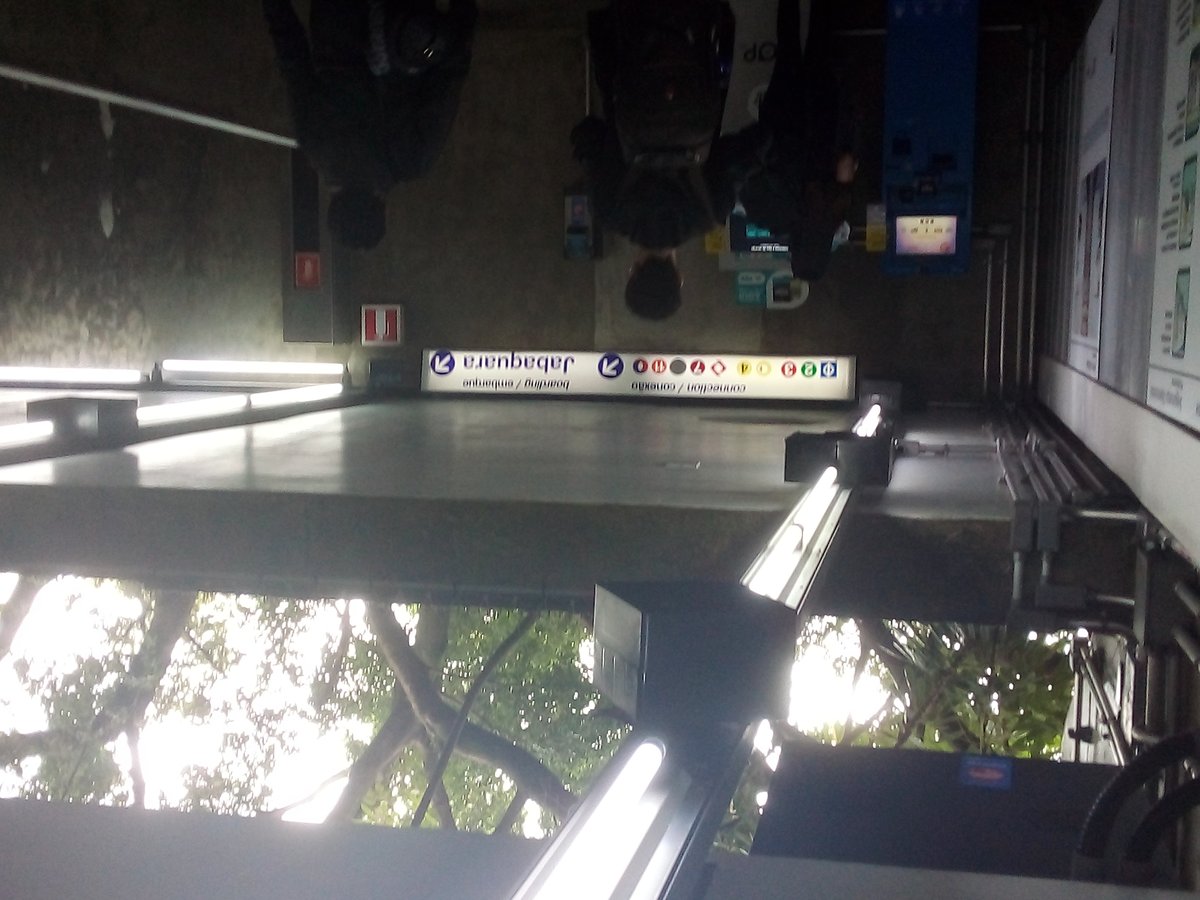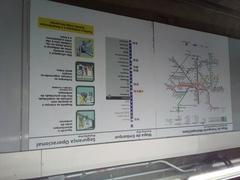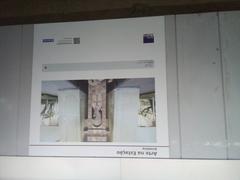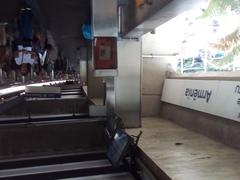
Armênia São Paulo, Brazil: Visiting Hours, Tickets, and Tourist Guide
Date: 15/06/2025
Introduction
In the heart of São Paulo, the Armênia district stands as a vibrant testament to the resilience and rich cultural heritage of the Armenian diaspora. Centered around the Armênia metro station in Bom Retiro, this neighborhood embodies over a century of Armenian migration, cultural preservation, and integration into São Paulo’s diverse urban landscape.
Armênia offers visitors a wealth of experiences: from its historic churches and poignant genocide memorials to bustling cultural centers, traditional Armenian cuisine, and dynamic community events. With excellent accessibility via the São Paulo Metro and welcoming institutions, Armênia is an unmissable destination for anyone seeking to understand the Armenian influence on Brazil’s largest city.
This comprehensive guide covers the district’s history, key landmarks, visiting hours, ticketing details, travel tips, and nearby attractions—ensuring a well-rounded and enriching visit. (brazil.mfa.am, asbarez.com, Wikipedia)
Table of Contents
- The Armenian Community: Early Migration and Growth
- Key Landmarks and Cultural Sites
- Visitor Information
- Armenian Culture in São Paulo
- Practical Tips and FAQs
- Nearby Attractions in São Paulo
- Plan Your Visit
- References
The Armenian Community: Early Migration and Growth
Armenian migration to Brazil began in the late 19th century, with the first families arriving around 1888. Fleeing persecution in the Ottoman Empire, especially during the Hamidian massacres and the Armenian Genocide of 1915, many Armenians sought refuge in São Paulo. The largest influx occurred between 1920 and 1926. By the 1930s, São Paulo became the principal center for Armenians in Brazil, with the community playing a crucial role in the city’s commercial and cultural life (Diaspora.gov.am, Untref.edu.ar).
Key Landmarks and Cultural Sites
Armenian Apostolic Church of St. George
Built in 1948, the Armenian Apostolic Church of St. George (Igreja Apostólica Armênia São Jorge) is a central spiritual and architectural landmark for the community. Its distinctive Armenian design, stained glass, and spiritual ceremonies reflect a deep commitment to cultural preservation.
- Visiting Hours: Daily, 9:00 AM – 5:00 PM.
- Admission: Free; guided tours available upon request.
Armenian Catholic Church of St. Gregory
Another vital religious site, the Armenian Catholic Church of St. Gregory (Igreja Apostólica Católica Armênia São Gregório), features traditional motifs and hosts regular services and cultural events (caronaturistica.com.br).
Monument to the Martyrs of the Armenian Genocide
Located opposite the Church of St. George, this monument is the first of its kind in South America. It serves as a site for remembrance and annual commemoration ceremonies every April 24th. (armenian-genocide.org)
Visitor Information
Visiting Hours and Admission
- Armenian Apostolic Church of St. George: 9:00 AM – 5:00 PM, daily. Admission is free.
- Monument to the Martyrs of the Armenian Genocide: Open 24/7; no entrance fee.
- SAMA Clube Armênio (Armenian Club): Event-based schedule; check ahead for details.
How to Get There
- By Metro: Take the Blue Line to “Armênia” station (formerly Ponte Pequena), located at Praça Armênia in Bom Retiro. The station is both a transit hub and an homage to community contributions (Wikipedia).
- By Bus/Car: Bom Retiro is well-serviced by buses, and parking is available nearby.
Accessibility
Most sites are wheelchair accessible. The Armênia metro station has elevators and accessible entrances. Contact individual sites in advance for specific accommodations.
Special Events and Tours
- Genocide Remembrance Day: April 24th ceremonies at the monument and churches.
- Cultural Festivals: Dance, food, and music events at the Armenian Club and community centers.
- Guided Tours: Walking tours are available through local operators and cultural organizations.
Armenian Culture in São Paulo
Cuisine and Bakeries
Armenian cuisine is a highlight—enjoy specialties like lahmajoun, esfihas, kibe, dolma, and baklava at bakeries and restaurants in Bom Retiro and Luz districts. These establishments are family-owned and offer a rich, authentic culinary experience (spcity.com.br).
Community Organizations
Institutions such as the Armenian National Dourian School and SAMA Clube Armênio help preserve language, traditions, and identities through classes, events, and cultural activities. Humanitarian work and diaspora support are coordinated through organizations like SOAR São Paulo (soar-us.org).
Integration and Notable Contributions
The Armenian community, now numbering between 40,000 and 100,000 in Brazil (mostly in São Paulo), has shaped the city’s business, academic, and cultural spheres. Notable figures include actress Aracy Balabanian and Vahan Agopyan, former rector of the University of São Paulo (asbarez.com).
Practical Tips and FAQs
Q: What is the best way to reach Armênia?
A: The São Paulo Metro (Blue Line) to Armênia station is the most convenient option.
Q: Are there entrance fees for key sites?
A: Most sites, including the churches and genocide memorial, are free to visit.
Q: Are guided tours available?
A: Yes, through local tour operators or by contacting community organizations.
Q: Is the neighborhood safe?
A: Bom Retiro is generally safe during the day. Exercise standard precautions and consider taxis or rideshares at night (Matador Network).
Q: When is the best time to visit?
A: April (for Genocide Remembrance) and during major cultural festivals.
Nearby Attractions in São Paulo
- Pinacoteca do Estado: Renowned art museum in Luz.
- Mercado Municipal de São Paulo: Gourmet food market in Centro.
- Paulista Avenue: Cultural and commercial hub, home to MASP museum.
- Ibirapuera Park: São Paulo’s largest park, ideal for relaxation and outdoor activities (IHeartBrazil).
Armênia’s location allows easy access to other multicultural neighborhoods, including Liberdade (Japanese), Bela Vista (Italian), and Bom Retiro’s Jewish and Korean communities (NextStopBrazil).
Plan Your Visit
- Dress modestly for church visits.
- Carry cash for small purchases and donations.
- Check event calendars for festivals and commemorations.
- Download the Audiala app for maps, audio guides, and real-time updates.
- Explore on foot to appreciate the neighborhood’s unique character.
References
- brazil.mfa.am
- asbarez.com
- Wikipedia
- pt.wikipedia.org
- spcity.com.br
- caronaturistica.com.br
- soar-us.org
- Matador Network
- NextStopBrazil
- IHeartBrazil

















































































































































































